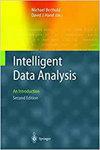接收信号强度指标预测的机器学习技术
IF 0.8
4区 计算机科学
Q4 COMPUTER SCIENCE, ARTIFICIAL INTELLIGENCE
引用次数: 0
摘要
无线通信技术的进步使人们努力提高接收质量,防止连接不良,避免无线和蜂窝设备之间的断开。防止通信故障的最重要步骤之一是正确估计无线设备的接收信号强度指示器(RSSI)。RSSI预测对于解决诸如定位、功率控制、链路质量估计、终端连接估计和切换决策等各种挑战非常重要。在本研究中,我们比较了不同的机器学习(ML)技术,这些技术可用于预测设备的接收信号强度值,给定该地区其他设备的接收信号强度值。我们考虑了各种ML方法,如多层神经网络、K近邻、决策树、随机森林和基于K均值的方法,以应对预测挑战。我们使用一家主要的国家蜂窝运营商提供的真实数据集检查了学习过程的准确性水平。我们的结果表明,加权K近邻算法,对于K = 3个邻居,平均而言,实现了最准确的RSSI预测。我们得出结论,在数据规模相对较小的环境中,并且可以获得地理点附近的数据,与其他ML方法相比,使用地理点附近的覆盖率来预测点的覆盖率的方法可以更成功,更准确。本文章由计算机程序翻译,如有差异,请以英文原文为准。
Machine learning techniques for received signal strength indicator prediction
The advances made in wireless communication technology have led to efforts to improve the quality of reception, prevent poor connections and avoid disconnections between wireless and cellular devices. One of the most important steps toward preventing communication failures is to correctly estimate the received signal strength indicator (RSSI) of a wireless device. RSSI prediction is important for addressing various challenges such as localization, power control, link quality estimation, terminal connectivity estimation, and handover decisions. In this study, we compare different machine learning (ML) techniques that can be used to predict the received signal strength values of a device, given the received signal strength values of other devices in the region. We consider various ML methods, such as multi-layer ANN, K nearest neighbors, decision trees, random forest, and the K-means based method, for the prediction challenge. We checked the accuracy level of the learning process using a real dataset provided by a major national cellular operator. Our results show that the weighted K nearest neighbors algorithm, for K = 3 neighbors, achieved, on average, the most accurate RSSI predictions. We conclude that in environments where the size of data is relatively small, and data of close geographical points is available, a method that predicts the coverage of a point using the coverage near geographical points can be more successful and more accurate compared with other ML methods.
求助全文
通过发布文献求助,成功后即可免费获取论文全文。
去求助
来源期刊

Intelligent Data Analysis
工程技术-计算机:人工智能
CiteScore
2.20
自引率
5.90%
发文量
85
审稿时长
3.3 months
期刊介绍:
Intelligent Data Analysis provides a forum for the examination of issues related to the research and applications of Artificial Intelligence techniques in data analysis across a variety of disciplines. These techniques include (but are not limited to): all areas of data visualization, data pre-processing (fusion, editing, transformation, filtering, sampling), data engineering, database mining techniques, tools and applications, use of domain knowledge in data analysis, big data applications, evolutionary algorithms, machine learning, neural nets, fuzzy logic, statistical pattern recognition, knowledge filtering, and post-processing. In particular, papers are preferred that discuss development of new AI related data analysis architectures, methodologies, and techniques and their applications to various domains.
 求助内容:
求助内容: 应助结果提醒方式:
应助结果提醒方式:


